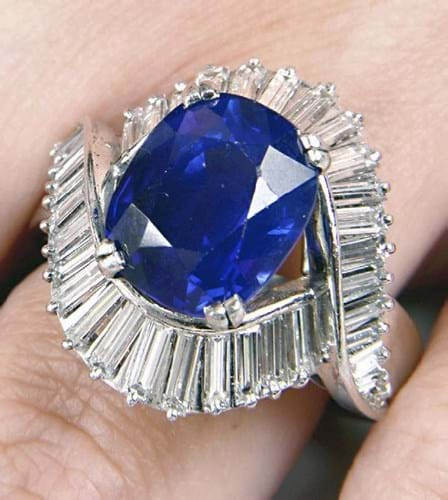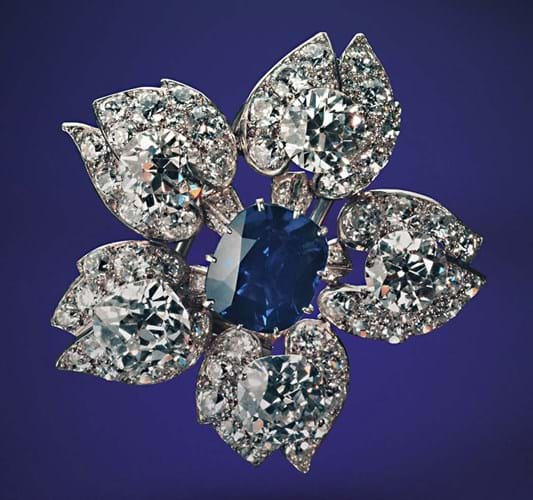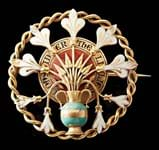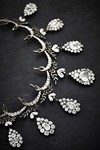Deposits of the sapphires were first discovered and mined in the early 1880s, following a landslide in a remote valley. Hearing of these sapphires, brighter than any previously discovered, the Maharaja of Kashmir purchased the mine and worked it for just five years between 1882-87, when the supply was depleted.
A new mine was later opened and periodic mining has been carried out since, but the vast majority of Kashmir sapphires found on the market today were mined during this short period.
Certification is a must. The sapphire and diamond ring offered at Fellows’ Fine Jewellery auction on October 12 came with a report from the GCS (Gemmological Certification Services), stating that the stone weighed 6.76cts, was from Kashmir and showed no signs of heat treatment.
The ring was made by the Parisian watch and jewellery house, Boucheron in the 1960s, the quality of the mount complimenting the important gemstone at its centre. The sapphire was surrounded by over two carats of diamonds and set in platinum.
Entered to auction for £60,000-80,000, the jewel drew worldwide attention before selling at £175,000.
The September 21 sale at Dawsons in Maidenhead included another jewel that combined a Kashmir stone with a great French atelier - a Cartier natural sapphire and diamond brooch designed as a single bloom of cherry blossom. Dated to the 1930s, the central stone was a cushion shape Kashmir sapphire with an ‘intense true blue’ colouration, with an estimated weight of 7ct. The petals were set throughout with old cut diamonds with a total estimated diamond weight of 16ct.
The brooch was offered with a GCS report stating the sapphire is from the Kashmir mines and shows no indications of heat treatment. Estimated at £80,000-£120,000, it took £340,000 - the firm’s top price of the year.
Montana sapphires
Sapphire mining at the Yogo Gulch in Montana began in 1895 after a cigar box of pale blue gems picked from a creek by a local rancher found its way to Tiffany’s in New York. There an appraiser pronounced them “the finest precious gemstones ever found in the United States”.
Gemstones found on North American soil - tourmalines from the state of Maine, North Carolina moonstones, Mississippi freshwater pearls and sapphires from Montana - were all favourites of Louis Comfort Tiffany (1848-1933).
George Frederick Kunz, head of gemmology at Tiffany at the time, supplied the raw materials and fuelled a fascination for unusual and unconventional stones in contrast to the platinum, diamonds and natural pearls that had made ‘white’ the dominant colour of the Belle Époque style.
A good example of Tiffany’s Arts and Crafts color palette came for sale at Lyon & Turnbull in Edinburgh on September 20. This moonstone and sapphire pendant, dated to c.1915, had a guide of £2000-3000 but raced away to bring £10,000.
A similar jewel was offered by Willow Auction House in Lincoln Park, New Jersey on September 14. This 14ct gold, moonstone and sapphire ring had a guide of $3000-4000 and sold at $4250.

Tiffany & Co gold, moonstone and sapphire ring, $4250 at Willow Auction House.

















